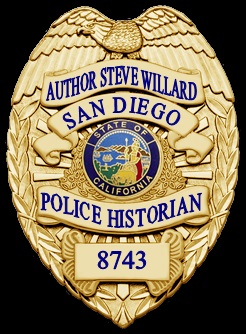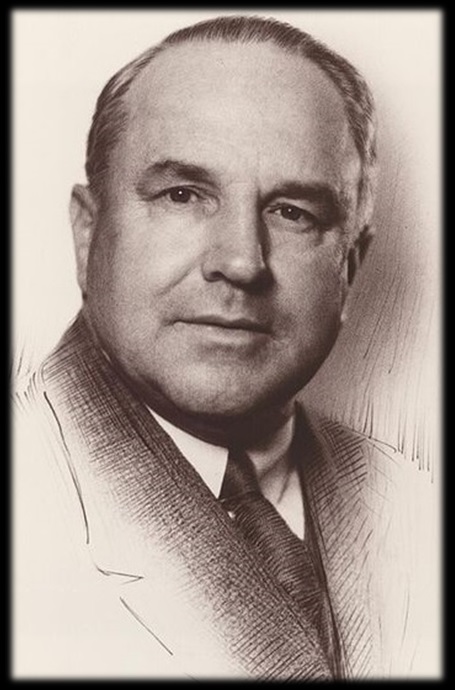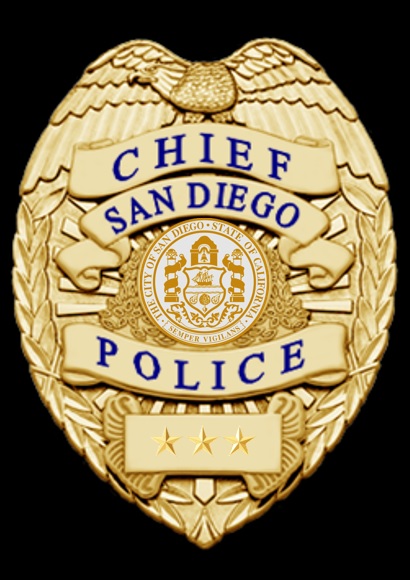



August 2013
“Former San Diego Police Chief Elected San Diego Mayor. Promises a Bold Agenda”
While the headline could be from the special election of November 2005 that brought Jerry Sanders into the top civic office, it was actually almost 80 years earlier and the new Mayor was Percival “Percy” J. Benbough Sr.
Born in 1884 in a suburb of London, England, Percy came to San Diego with his family at the age of four. As a young adult he tried his hand as a grocer then as the owner of a men's clothing store before ultimately starting a successful mortuary business. Later, his son, Legler Benbough, expanded the mortuary business into the largest group of mortuaries in the United States.
Percy first became involved in politics as a City Councilman in 1913. During his term on the council he served in the now obsolete capacity of Superintendent of Police where he was charged with the oversight of the Chief of Police. Because of the political landscape at the time, the office of chief was far more political than today. It is for that reason that during the first fifty years of the SDPD’s existence the office of chief changed hands 25 times.
In 1927, Percy took his first shot at the office of Mayor when he lost the election to Harry Clark but that didn’t stop his ascent to the top of local power. Four years later, he was appointed Chief of Police by a city council in fear of losing its grip on its most powerful city agency.
As the council saw it the department was its machine and renegade police chiefs who would enforce the law without favor were not to be tolerated.
Shortly after taking office Percy Benbough began transferring people. The official reason was to break up the cliques that had a stranglehold on the department. In reality some of the cliques were also extremely adept at dodging the political influence of City Hall. One retired officer later recalled, “We joined the cliques for survival. If you didn’t surround yourself with the right people you’d be run out.”
One of those transferred was Detective Lieutenant George Sears. Sears was an honest cop who had made a career in vice and didn’t take kindly to the move. The transfer would be the start of a long feud that would last the rest of their professional lives.
Percy Benbough only lasted three months as chief before submitting his resignation. In a letter to the council Benbough stated, “A police force allowed to deteriorate for the last 15 years cannot be fixed overnight.” When Benbough left office former Chief of Police James Patrick assumed an interim role for three weeks before Harry Scott, a US Navy veteran from Dallas Texas, replaced him.
Over the next four years the office of chief would be filled seven more times including the August 22, 1934, appointment of George Sears.
A year later, in a strange twist of fate, Sears deepest political enemy, Percy Benbough was back at City Hall – this time as Mayor after Mayor Rutherford B. Irones was looking at a charge of felony drunk driving and hit and run for running over a sailor then fleeing the scene. Faced with what was then termed San Diego’s most serious political scandal, Mayor Irones resigned and was eventually was sentenced to six months in jail.
Despite the window of opportunity created by the police department, Mayor Benbough was apparently less than appreciative and he and Chief Sears quickly resumed their political feud.
Because a City Manager form of government had been approved by voters just a few years before, Benbough didn’t have the power to fire Sears as past mayors once had but that didn’t stop some serious sniping from taking place. The men so disliked one another that for the entire time they served as San Diego’s highest profile officials they only had one photograph taken together. In private, the men often clashed over how one police chief thought the other should run the department. They also fought over the need for a new headquarters to replace the cramped 1911 structure on Second Street that was rapidly falling apart.
Despite his dislike for Sears, when the police department needed a new horse Mayor Benbough stepped in and used his personal money to buy one. With the city suffering from the economic strain of the Great Depression, it was a well appreciated gesture.
George Sears was popular with both the community and his own officers and he did a good job managing the police department. It probably didn’t hurt that Sears was well enough off financially that he didn’t need the money from the job. With all of those factors Mayor Benbough couldn’t outright fire him even if he had the power to do so.
By the late 1930’s things began to change. Even without the mayors support, Sears managed to establish enough political backing from members of the council and the federal government to get a new $410,000 police headquarters at 801 W. Market Street built. The fallout was Percy Benbough was left seething and looking for revenge. The mayor was so angry he refused to attend the groundbreaking ceremony for what was one of San Diego’s grandest public projects at the time.
As construction went towards erecting the headquarters, Benbough worked behind the scenes to get rid of Sears and, by late April of 1939, the Mayor had managed to twist the City Manager enough to get Sears fired. The action was timed to be just weeks away from the grand opening of the new police headquarters that Sears had fought so hard for.
Despite the City Manager being the one who actually told Sears his services would no longer be needed, the public recognized the firing was orchestrated by Mayor Benbough.
Chief of Detectives Harry Kelly was named interim chief however, through no fault of his own, some saw him as Benbough’s man and his days in the top office were numbered. Scrambling to contain the fallout from the Chiefs firing, Benbough took out a quarter page advertisement in the San Diego Union decrying that George Sears wasn’t the right man for the job. It was an odd position considering Sears had already been in office for almost five years.
The fallout didn’t last all that long but after less than 70 days in office Harry Kelley was replaced with another interim chief, John “Pete” T. Peterson, a recently retired detective lieutenant from the East San Diego substation who had served as interim chief on two previous occasions. To outsiders Peterson was seen as a man close enough to retirement that he didn’t owe anyone any favors.
John Peterson would remain at the helm until March 16, 1940, when Lieutenant Clifford Peterson (no relation) of the Long Beach Police Department was hired as the permanent chief. George Sears retired to a family farm in El Cajon on his $90.00 per month salary. He would remain there until his death in 1957.
Percy Benbough continued to serve as Mayor until his death in office on November 4, 1942.

Percy Benbough


